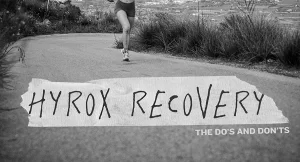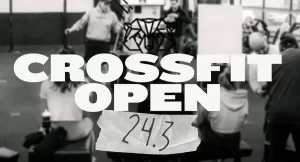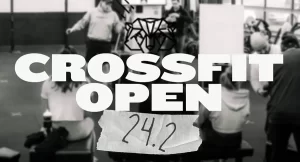Training with Injuries

One of the most common questions asked about training is: “Can you do CrossFit with an injury?” Despite dealing with an injury it's still possible to be active, and what's great about CrossFit is that it is extremely easy to adapt to different needs.
This usually leads to a follow up: “Should I train if I feel pain?” The answer to this one is more complicated largely because high intensity training is uncomfortable.
You’re breathing heavy, you're sweating buckets, and every mild discomfort that you experience is suddenly amplified by 100.
With more experience, you become more accustomed to working within the pain cave, but it can still be a challenge to know the difference between when you should “suck it up” and keep going versus when you should call it quits.
Where do you draw the line between nagging pain and chronic injury?
If you suffer from either, it’s necessary to decide on a course of action to take. Let’s discuss…
Don’t be a Hero
As a CrossFit coach, one of the more curious encounters that I have with my athletes usually plays out like this:
The athlete approaches and asks me to adapt a movement in the WOD for them because it hurts when they perform exercise x.
I propose exercise y; something that will provide a similar stimulus during the workout of the day, but perhaps isn't as appealing as exercise x.
Two out of three times they’ll say:
“Okay, for the first few rounds I’ll do exercise x and if it continues to hurt too much, I'll switch the exercise y. “
Before I even get a chance to point out the lack of reasoning in their strategy, off they go to warm up exercise x with the rest of the class.
The fact of the matter is that if your training mostly comes from doing classes, it’s unlikely that you belong to the very exclusive group of athletes who train professionally.

Put simply, you don’t make a living from working out.
If something hurts, it’s not worth making it worse just so you can stay on top of your box’s scoreboard.
Look at the bigger picture: Ultimately you train to improve your health and if your hobbies are aggravating injuries then you are on a fruitless venture.
Nothing is lost by adapting a WOD or scaling an exercise even if it’s one that you can normally do RX.
Scaling or adapting will help to keep you safe and in fact, returning to an exercise regression just may help you to fine-tune your technique.
How to Avoid Injury
Functional training sometimes gets a bad reputation for being harmful or dangerous.
This notoriety isn’t any more deserved than participating in other sports or even in other daily activities.
Seeing that the most common CrossFit-related injuries tend to be some form of strain form overload or overuse, it’s relatively simple to curb your risk for injury.
A good warm up, cool down, and application of proper form is enough for most athletes to stay safe while engaging in sport. Athletes should also be wary of trying to do too much too soon.
Attempting to use RX weights, high volume reps, or attempting high-skill movements without having the muscular or joint strength and/or proper technique necessary to perform them correctly is a fast-track way to injury.
Before upping the load, reps, or intensity, make sure you move with correct form and don’t be afraid to get a second or third opinion if you want to avoid getting hurt, take into account the recommendations of your coach and work within your limits.

Find the Source
Perhaps in your case, you suspect that you are injured, but you’re not sure if it’s “serious” (you really should have read the previous paragraph sooner).
It's important to know when it's necessary to be assessed by a doctor or wellness professional physio therapist, osteopath, or chiropractor to follow their suggestions regarding the recovery process.
As far as nagging pains go, if you notice it while you're training, alert your coach and opt to change any movements that will make matters worse.
If you continue to notice it in your day-to-day life, make arrangements to see a doctor or physiotherapist.
Yes, it’s inconvenient having to schedule an appointment and yes, it’s unpleasant to accept that part of your recovery might mean taking a few days or weeks off.
The bottom line is that it’s a lot easier to solve a problem if you know exactly what it is.
If you can’t differentiate between discomfort and injury, seeing someone that’s qualified is the best way to identify and attack the issue.
The longer you wait to find the root of the problem, the more complicated it may be to recover.
Walk it Off vs. Adjust Your Goals
Is it possible to train CrossFit while injured? Of course!
Just because you're nursing an inflamed elbow or irritable knee doesn’t mean you have to give up training all together.
The process is twofold: rehab your injury so that you can recover and continue to train everything else around it to maintain your overall fitness.

Ask your wellness professional what is necessary for recovery and apply their recommendations.
Your coach probably also has some experience working with injured athletes and is usually able to offer alternatives and rehabilitative exercises.
This may mean having to adapt your training and your goals, but it’s for your own good.
Take your rehab just as seriously as you would developing your weightlifting or gymnastic skills.
It may not be sexy or glamorous, but if you want to be able to train as you did before, you’ll need to be disciplined about performing rehab movements regularly. Being consistent and moving with purpose are the keys to recovering faster.
Final rep
A lot of the time we tend to ignore our injuries and continue to train however possible, but using lighter weights and swapping out movements aren’t long-term solutions.
There's no sense in delaying your recovery so that you can work 70% capacity. Focus on recovering properly so that you can work at 100% when needed.





